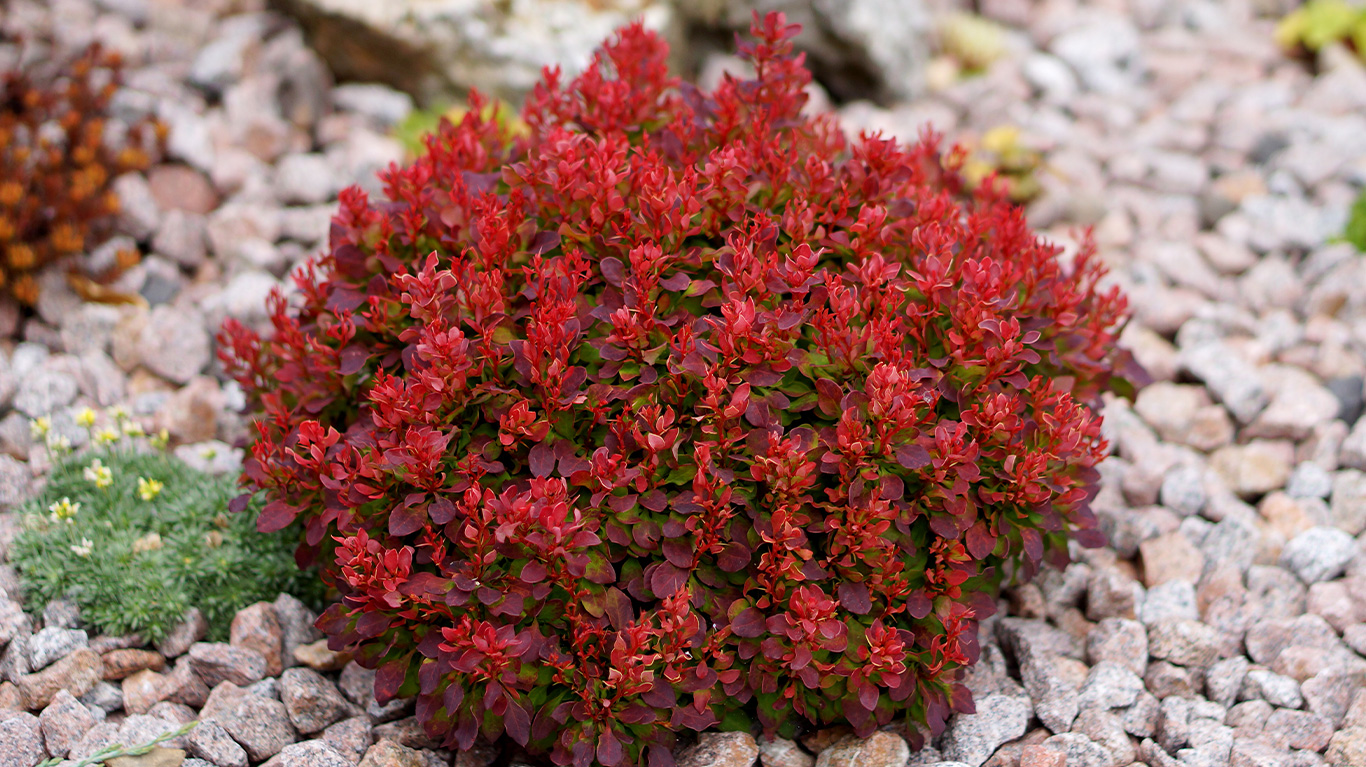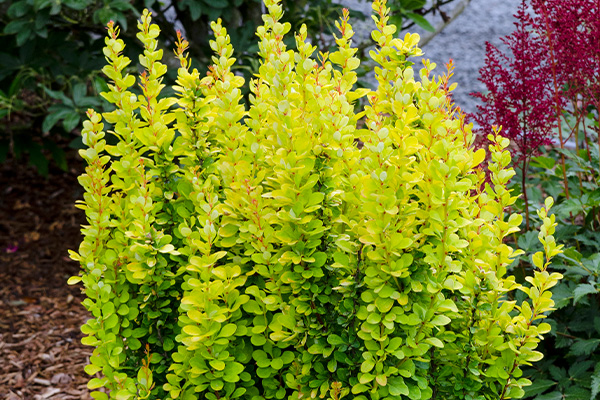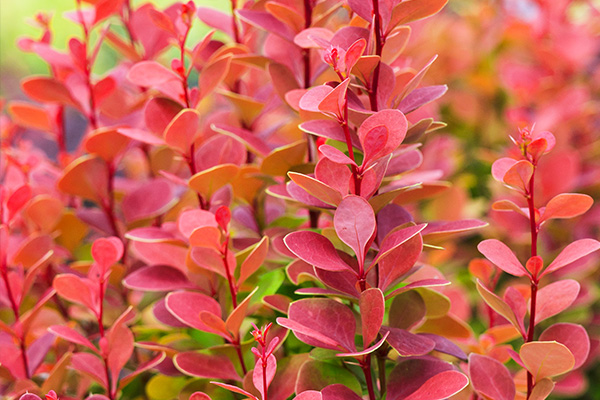How to Plant & Grow
Berberis
Berberis is an impressive type of shrub that can add vibrant colour and shape to your garden. With both deciduous and evergreen varieties to choose from, your garden will thank you for its glorious new addition.
If you’re a newbie to looking after a Berberis shrub, then fear not - follow this guide to learn everything you need to know about how to plant Berberis.

What We've Included
When to Plant | How to Plant | Where to Plant | Aftercare | Common Issues | Inspiration
When to Plant Berberis
When to plant berberis shrubs will depend on the type you have. Deciduous bare root berberis can be planted in October to April, while the plant is dormant.
Evergreen varieties can be planted in autumn (October-November) or in spring (February -May). Container varieties can be planted at any time of the year.

How to Plant Berberis
Planting Pot-Grown Plants
Our pot-grown plants are incredibly easy to plant and grow. Whether you’re growing them directly outside into the border or into a container, our pot-grown plants are a breeze from the moment they arrive.
- Dig a hole in the border that’s big enough to house the root system. If planting in pots, fill a large pot halfway with potting soil and then make a well in the middle. Do this until the top of the soil from the plant is just below the top of the pot.
- Wedge in the plant by adding soil to the gaps in the hole, firming down the surface to ensure it’s in place.
- Water well and you’re done!
Planting Loose Plants
Loose plants to beginners might sound intimidating but are easy to plant! Here’s how to do it:
- Dig a hole in the border that’s big enough to house the root system. If planting in pots, fill it halfway with potting soil and then pop the roots in with the crown pointing upwards and the root system pointing to the floor.
- Ensure the crown is just below the soil unless the plant has some leaves, in which case leave them exposed with the rest of the root system under the soil.
- Water well once planted.
Where to Plant Berberis
These shrubs are highly versatile. We recommend positioning them somewhere in full sun or part shade. This may differ based on the variety. Larger types can be grown in the bed, whereas compact varieties will suit beds and containers.

After Care
When to water Berberis
Water Berberises regularly in their first year. After this, they’ll only need watering in hot periods.
Varieties grown in containers will need regular watering throughout the season, as they’ll drain faster.
Should I feed my Berberis Shrub?
Berberis grown in the ground won’t need feeding. However, container varieties can be given a general liquid feed in spring or summer. You can also mulch berberis to help the soil retain its moisture and feed nutrients back into the soil.
Pruning Berberis
Berberis don’t necessarily need pruning regularly, but if you prefer to keep a nice shape to complement your display, then pruning can be done. However, the style of pruning may differ from variety to variety.
Deciduous berberis shrubs should be pruned in mid or late winter when the plant is dormant and lacks leaves. Remove dead wood in summer. Remove any obscure shoots and thin out to the oldest of stems. However, if you grow berberis for its autumn berries, then pruning isn’t really needed.
For evergreen varieties, you can prune them after they’ve flowered in mid-summer, or even in autumn after they’ve fruited. Use a sharp pair of secateurs to cut away individual stems. They’re likely to only need a gentle shaping, so just clip back dead or obscure shoots to maintain their shape.
If you need to prune back hard, then you can. Do so in late winter, cutting it back to ground level. Feed the plant with a general liquid feed and mulch the soil above the plant.
How to Propagate Berberis
You can propagate berberis plants by taking semi-ripe cuttings in late summer or even in early autumn. Pick a healthy side shoot that’s roughly 10cm long and pull it away from the parent plant. Ensure a sliver of bark is intact. Put them into a pot inside that’s full of compost. They will need winter protection, so a small cold frame will do the job, too, if you don’t have a greenhouse. Even the edge of a windowsill with suffice.
Common Issues
Thankfully, Berberis is fairly pest and disease-free. Some may be victims of scorch on shoots if there’s a late spring frost or bouts of drought. Drought can also cause powdery mildew.
Aphids are another thing to look out for, especially on new shoots. Sawfly can also be an issue. Established plants will often recover from an attack from these pests, but newer plants may suffer.

Ready to Shop?
Find some inspiration for your garden
